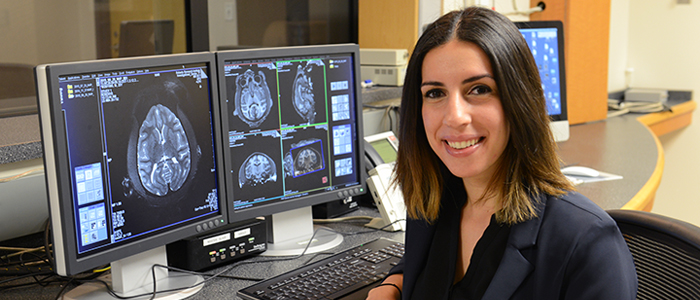Bridging the gender gap in science

As a child growing up in an Assyrian community in Etobicoke, Ontario, Ramina Adam, PhD Candidate, was strongly encouraged by her parents to pursue higher education and follow her passion and interests.
They never replaced Adam’s books with dolls or makeup, or hinted that the disciplines of science, technology, engineering and math (STEM) were for boys, not girls. She never had to overcome the biases working against her as a female interested in one day becoming a clinician-researcher.
But as she moves further into her education, Adam explained she becomes more aware of the gender gap in science, and how she, in many ways, is still an exception to the rule.
“There are so many major issues in the world that scientists are trying to find answers for, yet half the population is discouraged from being part of finding those solutions,” she said. “I think it is so important to cultivate any interest in science that anyone may have, and not shun those people away because of who they are, or because it’s not something they ‘should be’ interested in.”
Adam is part of Western University’s Graduate Women in Neuroscience group, and is the graduate liaison for the University’s Undergraduate Women in Science group. Last year, she pitched the idea of organizing a "young women in science" conference to her team, and it’s something they are currently developing for late March 2016.
“The conference is called Inspiring Young Women in STEM,” she said. “We’re inviting undergraduate students to attend poster sessions and workshops, and listen to guest lectures from female faculty from all of the STEM disciplines. We want to show these young women that there are female role models in these fields.”
Adam can also be described as a role model for young women aspiring to join the field of science. After curating her own undergraduate neuroscience program by pairing neurophysiology courses with neuropsychology courses, she decided to pursue her master’s degree, and transferred into the PhD program one year in.
Adam now works with Stefan Everling, PhD, a scientist at Robarts Research Institute and a professor in the Department of Physiology and Pharmacology. She is studying what functional changes occur in the brain immediately following a stroke and throughout the recovery period.
If someone has a stroke to the right hemisphere of the brain, they usually develop attention or motor impairments in their left hemifield, one half of their field of vision, making them unable to detect any people or objects placed in that area of vision. This is called hemispatial neglect.
What’s interesting about this is in the months following the stroke, patients usually become better and better at noticing things in that area. While they may not fully recover, they get pretty close to it, but it ends up taking a significant amount of time.
“This injury can be very debilitating, as patients can’t really work or live on their own when it happens,” Adam said. “The long-term goal of this project is to find ways to speed up this recovery. We want to see which changes in the brain are underlying the recovery, and in the future discover ways we can speed this process up.”
Adam enjoys working with the brain, and finds the concept of brain plasticity fascinating. She explained this is a perfect project for her because she always wanted to work on research that had a translational aspect to it, as she hopes to pursue medical school once she completes her PhD.
“Eventually I would like to become a clinician-researcher. I would love to go to medical school, pursue neurology, and eventually be working with stroke patients and conducting stroke research at the exact same time,” she said. “These may seem like very focused, long-term goals, but when you get this passionate about something you can’t let go of it.”








